Research shows that 73% of homeowners consider their fireplace the focal point of their living space, yet only 31% incorporate plants to enhance its aesthetic appeal. You’ll discover how strategic plant placement around your fireplace can transform it from a mere heating element into a stunning design feature that elevates your home’s ambiance. From classic cascading ferns to modern air plant installations, each style offers unique benefits that complement your existing décor while maintaining safe distances from heat sources.
Contents
- 1 Cascading Ferns for Classic Elegance
- 2 Tropical Paradise With Mixed Foliage
- 3 Modern Minimalist With Air Plants
- 4 Succulent Garden Arrangement
- 5 Vertical Living Wall Display
- 6 Bohemian Hanging Plant Collection
- 7 Vintage-Inspired Terrarium Setup
- 8 Mediterranean Herbs and Topiaries
- 9 Japanese Zen Garden With Bamboo
- 10 Seasonal Blooming Plant Rotation
Cascading Ferns for Classic Elegance
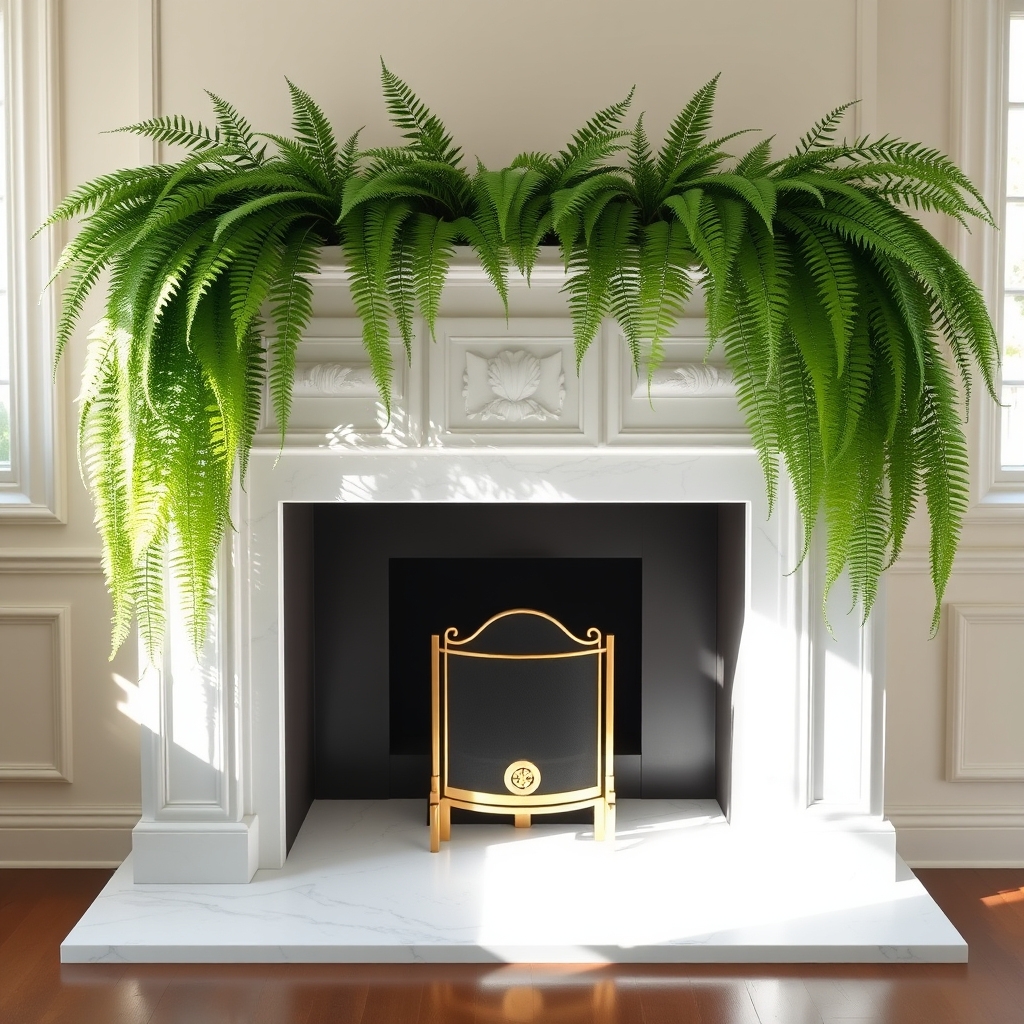
Cascading ferns, when used in fireplace decor, create a graceful, flowing effect with their arching fronds draping elegantly over mantels and hearths.
These plants feature delicate, layered foliage that naturally grows in a downward pattern, adding movement and softness to the rigid lines of a fireplace.
Boston ferns and Maidenhair ferns are particularly suitable choices, offering deep green color and lush texture while maintaining a timeless, sophisticated appearance.
The natural draping tendency of these ferns helps soften architectural elements while providing year-round greenery, making them an ideal choice for creating classic, refined fireplace displays.
Tropical Paradise With Mixed Foliage

A Tropical Paradise With Mixed Foliage fireplace design transforms the hearth area into a lush, verdant display reminiscent of a rainforest setting.
Large-leafed plants like philodendrons, bird of paradise, and monstera deliciosa create dramatic height variations and striking silhouettes.
Smaller ferns and trailing pothos add layers of texture at different levels, while bromeliads introduce pops of color.
Plants are typically arranged asymmetrically in various container sizes and heights, creating visual depth.
This style commonly incorporates natural materials like bamboo stands or driftwood pieces to enhance the tropical atmosphere.
The overall effect produces an exotic, living focal point that brings warmth and organic energy to the fireplace setting.
Modern Minimalist With Air Plants
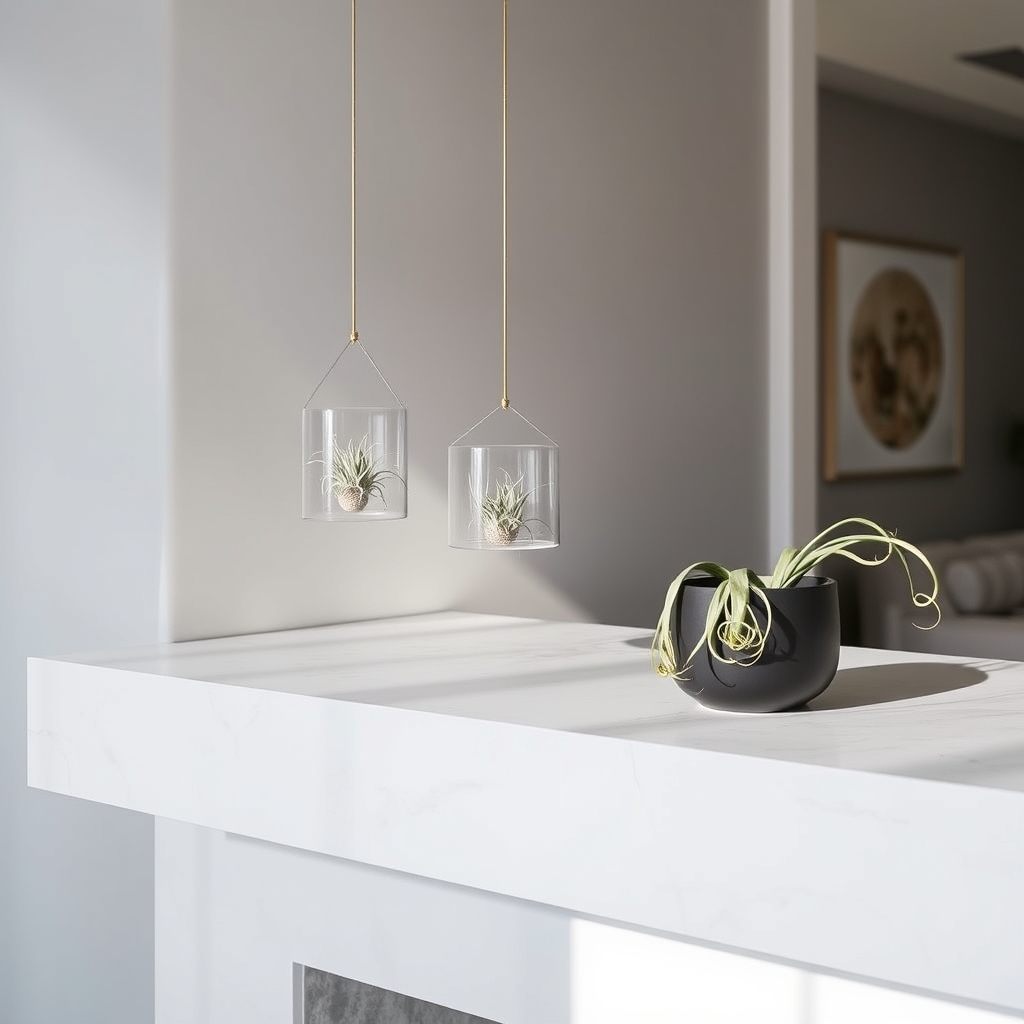
Modern minimalist fireplace plant decor emphasizes clean lines and simplicity, featuring air plants as the primary botanical element.
These low-maintenance Tillandsia species float elegantly in geometric glass terrariums or rest on sleek metal stands, creating an uncluttered aesthetic. The style typically incorporates neutral colors, with the soft gray-green of air plants providing subtle natural accents against white, black, or concrete surfaces.
Small clusters of air plants may be arranged asymmetrically on the mantel, often paired with simple metallic or ceramic vessels.
This style’s unique feature is its ability to achieve a sophisticated, contemporary look without soil or traditional potting methods, as air plants absorb nutrients through their leaves rather than roots.
Succulent Garden Arrangement
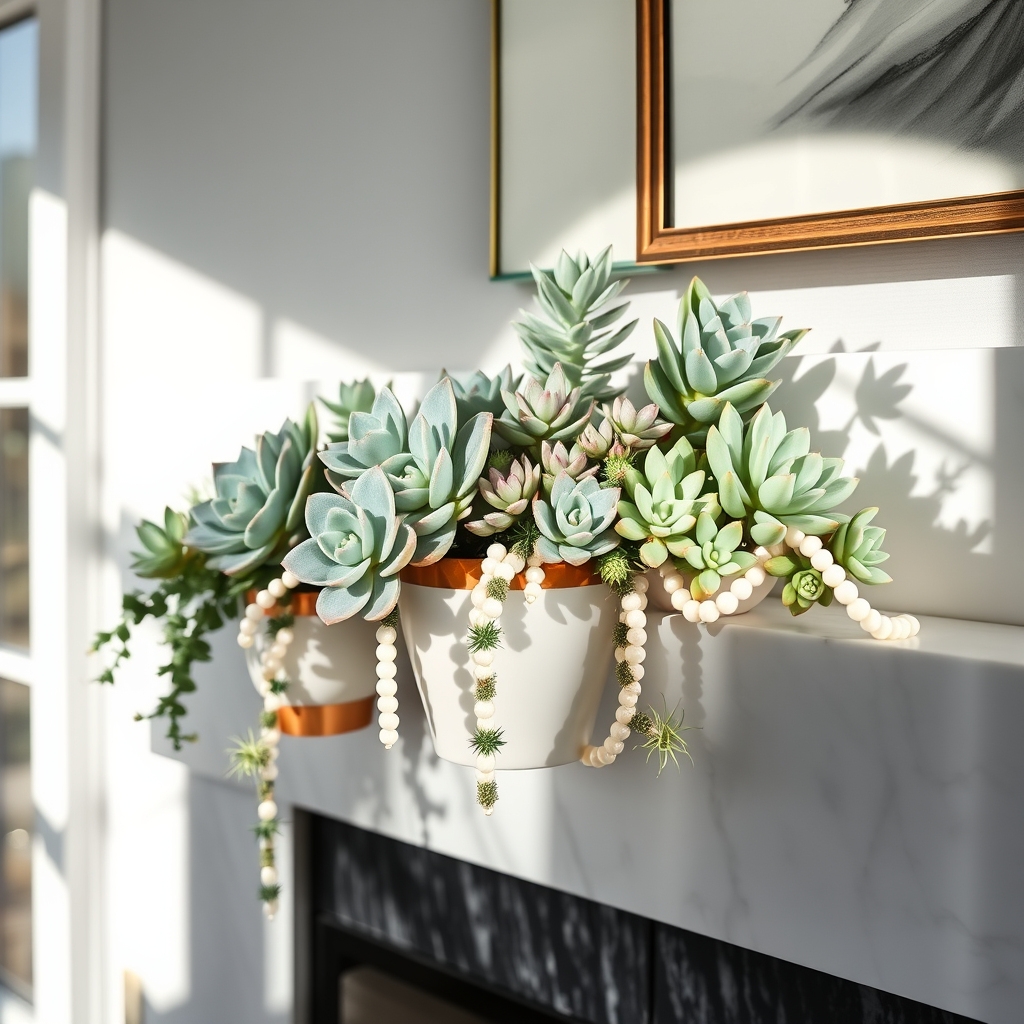
A succulent garden arrangement around a fireplace combines various drought-resistant plants in decorative containers or groupings.
Typically featuring rosette-shaped plants in different sizes, colors, and textures, such as Echeveria, Sedum, and Haworthia, the plants showcase muted greens, blues, purples, and pinks, creating a natural, low-maintenance display.
These arrangements can be placed in geometric planters, vintage vessels, or sleek modern containers that complement the fireplace’s style.
Succulents’ compact growth patterns and architectural forms make them ideal for mantels and hearth areas, providing year-round visual interest without requiring frequent maintenance or watering.
Vertical Living Wall Display
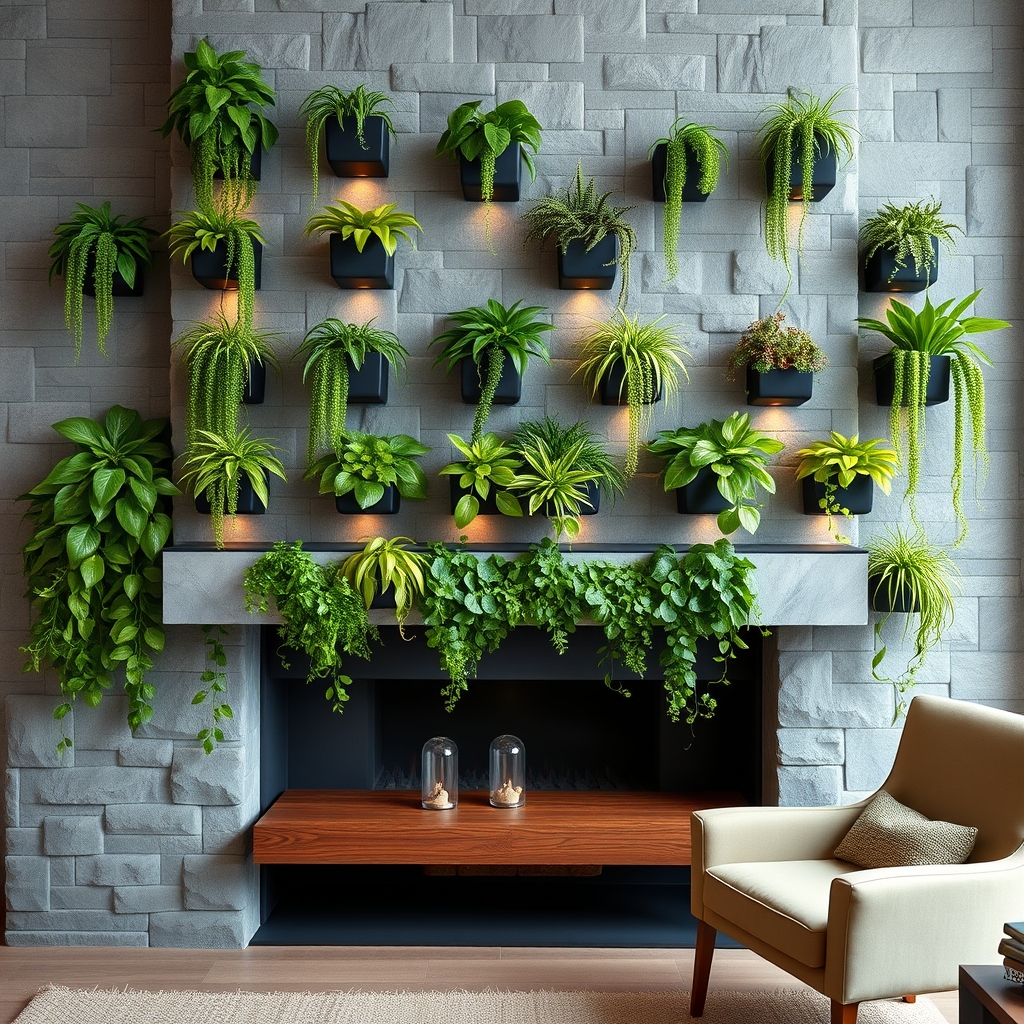
A Vertical Living Wall Display creates a dramatic botanical feature that extends upward from the fireplace mantel, transforming the entire wall into a lush, green tapestry.
The design incorporates multiple plants arranged in a vertical pattern, often using mounted planters, pocket systems, or specialized wall-mounting frameworks.
Plants cascade and grow at different heights, creating depth and visual interest while maximizing vertical space.
This style typically combines various textures and shades of greenery, from trailing vines to compact foliage plants, arranged in a deliberate pattern that draws the eye upward from the fireplace.
The living wall can be designed as a full floor-to-ceiling installation or as a more contained vertical garden segment above the mantel.
Bohemian Hanging Plant Collection
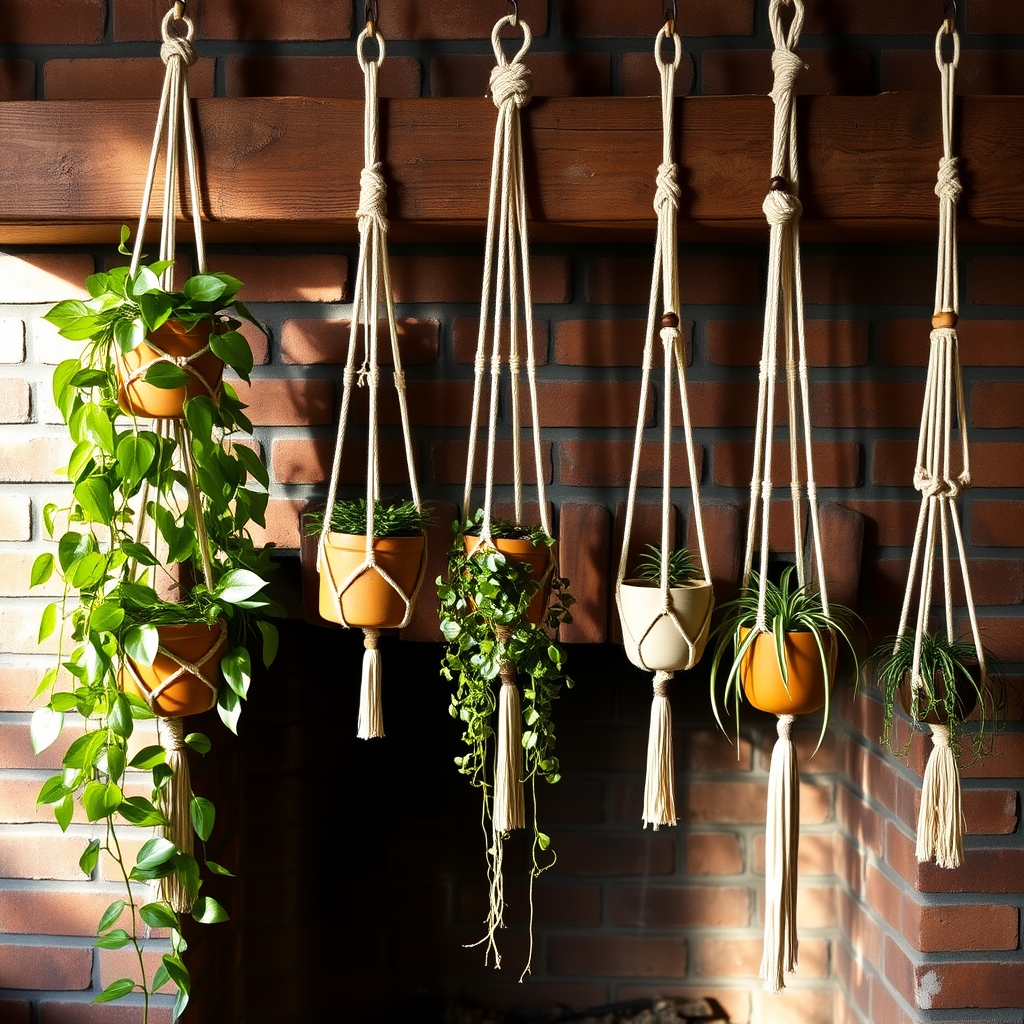
The Bohemian Hanging Plant Collection transforms an unused fireplace into a vibrant, free-spirited display featuring cascading plants suspended at varying heights.
Multiple macramé plant hangers, often in natural fibers like jute or cotton, dangle from the mantel or mounted hooks, holding an eclectic mix of trailing plants such as pothos, string of pearls, and spider plants.
The arrangement typically incorporates mixed pot styles, including weathered terracotta, vintage brass containers, and hand-painted ceramic vessels.
Layered greenery creates a relaxed, organic flow while bohemian accents like wooden beads, tassels, or colorful woven elements add artistic flair to the overall composition.
Vintage-Inspired Terrarium Setup
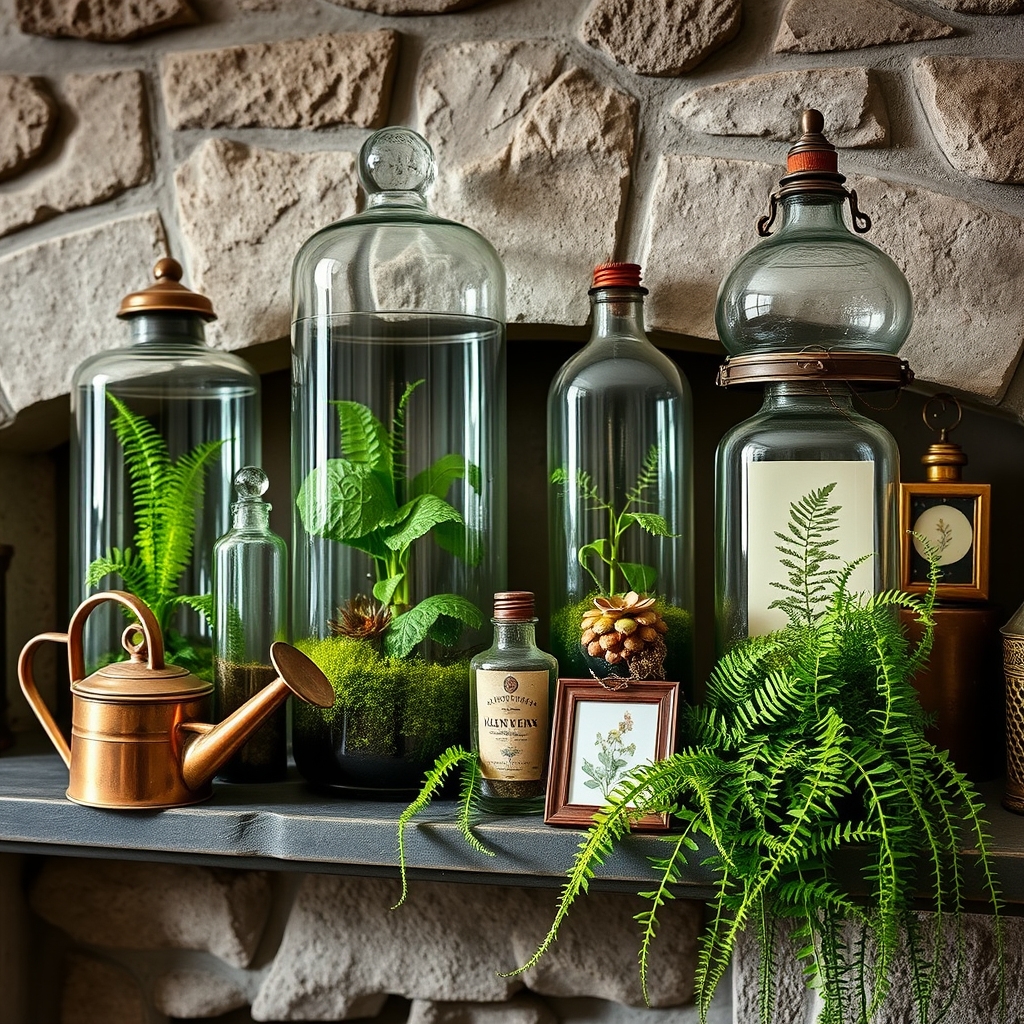
The vintage-inspired terrarium setup transforms a fireplace into a whimsical botanical display featuring glass vessels of varying shapes and patinas.
Antique apothecary jars, mason jars, and Victorian-style glass cases house carefully arranged miniature plant landscapes. Small ferns, moss, air plants, and succulents create layered greenery within each container, while weathered brass or copper accents and vintage botanical prints complement the aesthetic.
The terrariums are typically arranged at different heights and depths on the hearth or mantel, creating visual interest through asymmetrical placement and the interplay of light through the aged glass containers.
Mediterranean Herbs and Topiaries
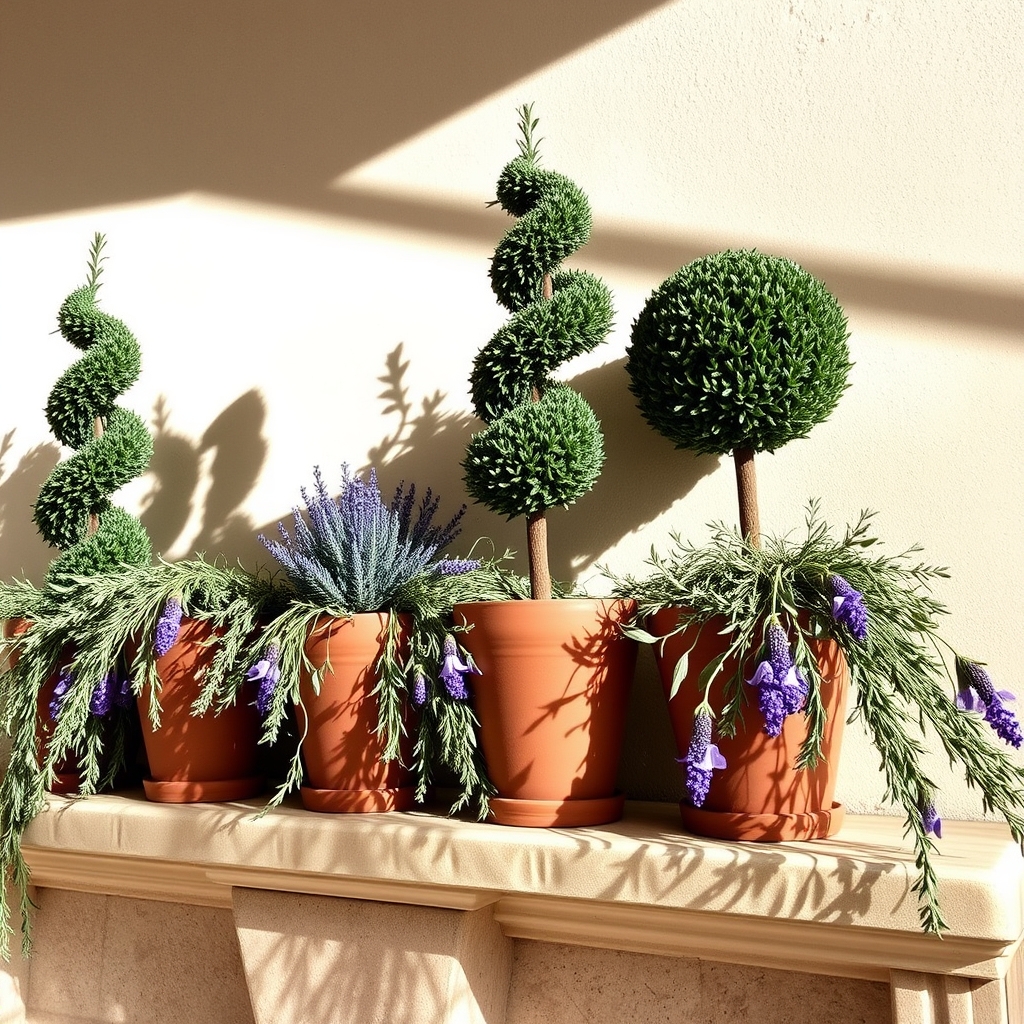
Mediterranean herbs and topiaries create an elegant, fragrant display around fireplaces, featuring sculpted evergreen plants and aromatic herbs typical of Southern European gardens.
Common elements include rosemary, bay laurel, and lavender arranged in terra cotta pots, alongside carefully trimmed boxwood or myrtle topiaries shaped into classic geometric forms like spheres, cones, and spirals.
The combination provides visual structure through the manicured topiaries while offering practical benefits from the herbs, which release pleasant scents when warmed by nearby fireplace heat.
The style’s signature characteristics include drought-tolerant plants, earthenware containers, and a formal yet relaxed arrangement that evokes Mediterranean villa gardens.
Japanese Zen Garden With Bamboo
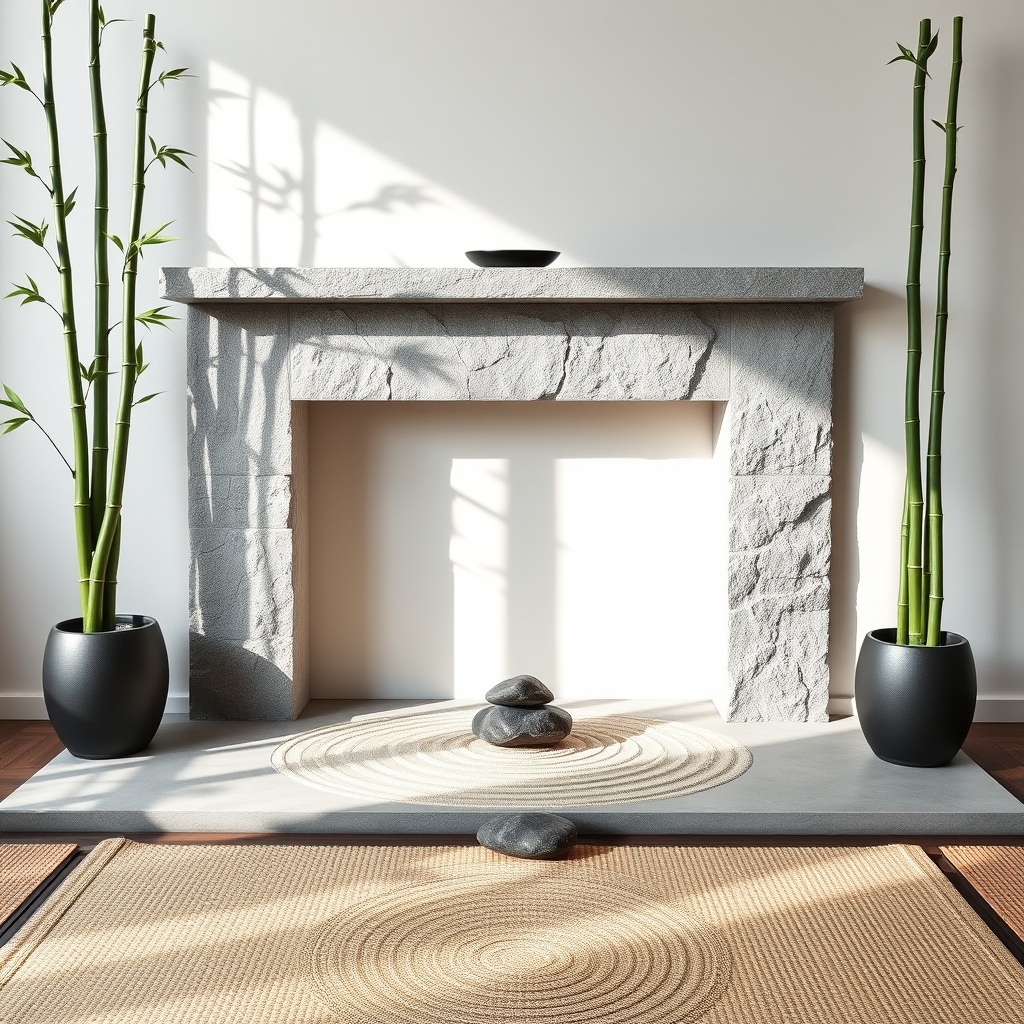
A Japanese Zen garden with bamboo around a fireplace creates a minimalist, meditative atmosphere that combines natural elements with peaceful design.
The arrangement typically features potted bamboo plants of varying heights positioned asymmetrically near the fireplace, complemented by small rock gardens containing carefully raked sand or gravel patterns.
The bamboo’s vertical green stalks contrast beautifully with the fireplace’s stone or brick, while its gentle rustling adds a soothing auditory element.
Essential elements often include:
- Lucky bamboo or timber bamboo varieties in simple ceramic containers
- Small stones or pebbles arranged in meaningful patterns
- Natural fiber mats or tatami-style elements
- Minimal ornamentation focusing on clean lines
- Earth-toned color palette emphasizing simplicity
- Strategic negative space maintaining visual balance
This style embodies the principles of “Ma” (negative space) and “Wabi-sabi” (finding beauty in simplicity), creating a tranquil focal point in the room.
Seasonal Blooming Plant Rotation
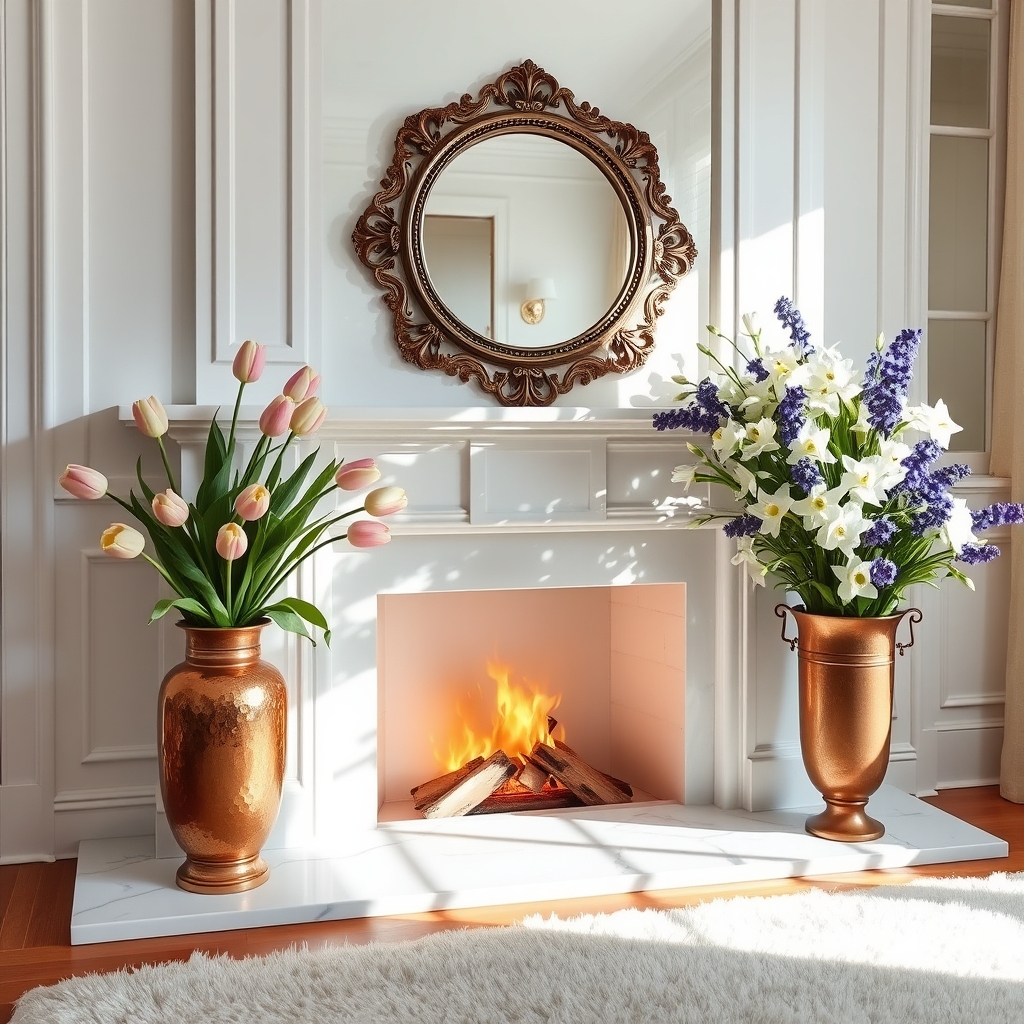
Seasonal Blooming Plant Rotation involves strategically changing out plants near the fireplace throughout the year to maintain continuous visual interest and reflect each season’s natural beauty.
Plants are selected and swapped based on their blooming cycles and seasonal characteristics:
Spring: Tulips, daffodils, and hyacinths
Summer: Hydrangeas, lilies, and potted roses
Fall: Chrysanthemums, ornamental cabbage, and autumn ferns
Winter: Poinsettias, amaryllis, and winter-blooming orchids
This rotation system ensures:
- Fresh, vibrant displays year-round
- Appropriate plants for changing light conditions
- Seasonal color schemes that complement room decor
- Plants that can tolerate varying fireplace temperatures
- Natural progression of blooms matching outdoor landscapes
Key considerations include selecting containers that complement both the fireplace and seasonal themes, maintaining proper moisture levels, and timing transitions between seasons for optimal blooming periods.
